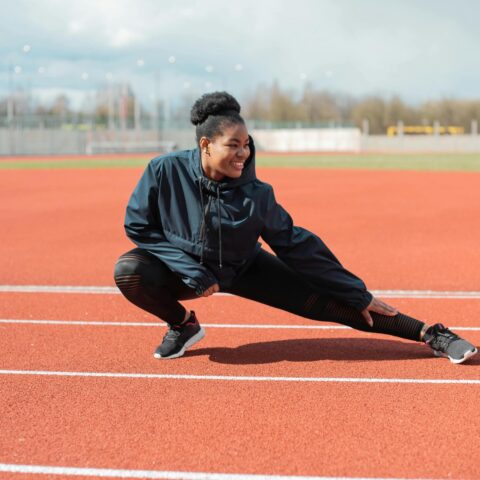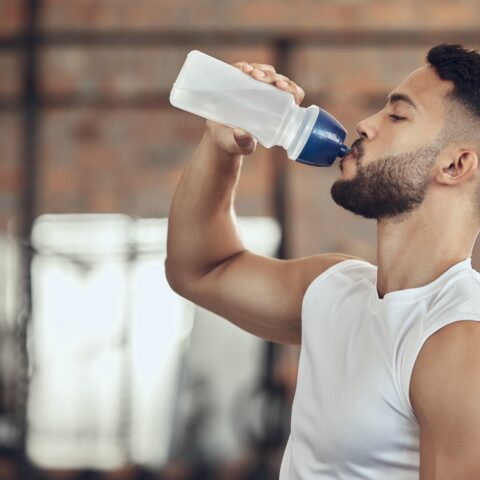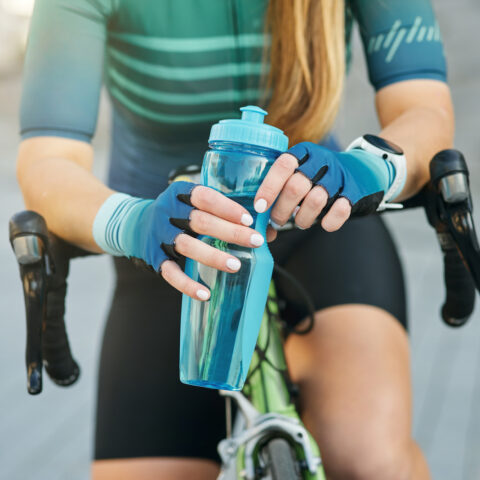Tips for Maximizing Your Exercise Routine

Everyone knows exercise is good for us. It helps keep the skeletal and muscular systems working as they should, supports a healthy cardiovascular system, and even helps to avoid chronic and metabolic disorders, like type 2 diabetes. [1]
Physical activity is also crucial for managing stress levels and supporting a balanced mood. [2] Exercise alone isn’t the best way to lose weight. However, while exercise without a healthy diet won’t do much, likewise eating well and being physically sedentary will have overall poor results. [3]
How Hunter-Gatherers Lived
In the Paleo era, survival meant waking up with the sun, gathering food, hunting, and attending to other necessary tasks. They were highly active. And even when they were being sedentary, it was different from the modern-day equivalent of watching Netflix and eating a bag of chips. Their non-ambulatory time was spent in postures like squatting. They engaged in active rest. Since daily exercise isn’t built into our daily lifestyle the way it was for our ancestors, it can be hard to find the time for a proper workout.
How to Be a Modern-Day Hunter-Gatherer
While it’s hard to be as active as our ancestors were, you can slowly incorporate the habits of hunter-gatherers into your day. Spend a little time each day going on errands, cleaning the house, or walking instead of driving.
If you work from home, you might also want to consider a standing desk to help limit the amount of time you spend sitting. You can also sit on a yoga ball or take breaks from work meetings to spend a few minutes rebounding on a mini-trampoline.
Hunter-gatherers weren’t always exercising at high performance levels. You don’t have to only do cardio workouts to get credit for being active. But even as you take more steps toward increasing your daily movement, you do want to get your heart rate elevated on a regular basis. That’s how you get the strength and cardiovascular benefits of activity.
What to Do Before a Workout
It’s important to warm up your muscles and make sure they are loose to prevent injury. If you snap a cold rubber band, it’ll break, but if you let it acclimate to room temperature, it’ll be elastic and stretchy. Just envision your muscles as needing a few gentle warm-up moves to acclimate to the activity level they’re about to experience.
Remember, however, that static stretching before exercise is no longer recommended as it has been shown in many studies to potentially hurt performance and actually increase the risk of injury in some cases. [4–9] Instead, it’s best to do 5–10 minutes of low intensity movement to warm up the muscles, like walking or an easy spin on a bike. If you’re gearing up for a harder intensity workout, aim to do two or three 6-second sprints as a warm-up.
You might also want to consider squatting. We sit all day long, but squatting offers benefits while still letting you take a load off. Instead of letting muscles fully rest, as happens when we sit, squatting engages muscles in an active way, forcing more contractions.
You can do squats as part of an exercise program, which is good, but you should also work squatting into your daily routine. Squat to tie your shoes, instead of bending over. Squat to pick things up from the floor, to play with your children, or even to read a book for a few moments. Squatting has plenty of benefits for core strength too, which is why it’s become a regular part of my post-baby daily routine.
During Your Workout
Preventing injuries during a workout is always preferable to recovering from them. You can prevent injuries by working in different forms of movement to your exercise and daily activity routines. When you balance stretching with strength-building activities and cardio, you bring your entire body through a full range of motion.
Repeatedly strengthening one area and neglecting others will leave the body unbalanced which could result in injury or pain. The body benefits from being balanced, and this is equally true with muscle strength.
Training different areas on different days is a good way to find balance. As with food, the more variety you give your body, the better your overall health will be.
After Your Workout
Even short and gentle workouts need recovery time. This becomes more important as you increase the length of time and intensity.
Proper recovery nutrition after a hard workout is important as your body generally needs to replenish fluids, electrolytes and glycogen if you trained hard. We recommend eating regular food with some water after exercise, if you can tolerate it, as it has proved to be just as effective as any expensive recovery mix. [10] Just be careful if you decide to indulge in commercially prepared recovery drinks. A 20-minute workout may only burn 200 kcal, while many recovery mixes can have over 400 kcal per drink! Plus, many are high in simple sugars and use whey protein, which is derived from cow’s milk.
Instead, you might want to consider sipping on some broth. Bone broth is a great post-workout beverage because it contains important amino acids, electrolytes, and healing gelatin. Smoothies are also good because they provide liquid with additional vitamins, minerals, and macronutrients to refuel the body and prevent an energy crash. Bonus: Try bone broth mixed into your favorite smoothie for the ultimate recovery drink!
However, even these natural food recovery beverages have a pretty high calorie count, so remember to sip mindfully.
The Bottom Line
The human body was designed to move. You don’t have to be a professional athlete or an exercise junkie to want to work on your strength, agility, flexibility, and endurance. Even a gradual increase in daily movement and energy expenditure can improve your fitness and go a long way in supporting healthy muscular, skeletal, cardiovascular, and metabolic wellness. Start by increasing your daily steps and squatting more. By making these second nature, you’ll be more in step with your hunter-gatherer Paleo ancestors.
References
[1] J. Williamson and M. Pahor, “Evidence Regarding the Benefits of Physical Exercise,” Arch Intern Med, vol. 170, no. 2, pp. 124–125, 2010, doi: 10.1001/archinternmed.2009.491.
[2] E. Childs and H. de Wit, “Regular exercise is associated with emotional resilience to acute stress in healthy adults,” Front Physiol, vol. 5, p. 161, 2014, doi: 10.3389/fphys.2014.00161.
[3] R. M. Foright et al., “Is regular exercise an effective strategy for weight loss maintenance?,” Physiol Behav, vol. 188, pp. 86–93, 2018, doi: 10.1016/j.physbeh.2018.01.025.
[4] J. M. Wilson et al., “Effects of Static Stretching on Energy Cost and Running Endurance Performance,” J Strength Cond Res, vol. 24, no. 9, pp. 2274–2279, 2010, doi: 10.1519/jsc.0b013e3181b22ad6.
[5] D. M. O’Connor, M. J. Crowe, and W. L. Spinks, “Effects of static stretching on leg power during cycling.,” J Sports Medicine Phys Fit, vol. 46, no. 1, pp. 52–6, 2006.
[6] A. J. BLAZEVICH et al., “No Effect of Muscle Stretching within a Full, Dynamic Warm-up on Athletic Performance,” Medicine Sci Sports Exerc, vol. 50, no. 6, pp. 1258–1266, 2018, doi: 10.1249/mss.0000000000001539.
[7] J. M. Avedesian, L. W. Judge, H. Wang, and D. C. Dickin, “The biomechanical effect of warm-up stretching strategies on landing mechanics in female volleyball athletes,” Sport Biomech, vol. 19, no. 5, pp. 1–14, 2018, doi: 10.1080/14763141.2018.1503322.
[8] L. E. Hart, S. D. Walter, J. M. McIntosh, and J. R. Sutton, “THE EFFECT OF STRETCHING AND WARMUP ON THE DEVELOPMENT OF MUSCULOSKELETAL INJURIES (MSI) IN DISTANCE RUNNERS: 353.,” Medicine Sci Sports Exerc, vol. 21, no. 2, p. S59, 1989, doi: 10.1249/00005768-198904001-00353.
[9] C. J. McGowan, D. B. Pyne, K. G. Thompson, and B. Rattray, “Warm-Up Strategies for Sport and Exercise: Mechanisms and Applications,” Sports Med, vol. 45, no. 11, pp. 1523–1546, 2015, doi: 10.1007/s40279-015-0376-x.
[10] D. McCartney, C. Irwin, G. R. Cox, and B. Desbrow, “The effect of different post-exercise beverages with food on ad libitum fluid recovery, nutrient provision, and subsequent athletic performance,” Physiol Behav, vol. 201, pp. 22–30, 2018, doi: 10.1016/j.physbeh.2018.12.013.
Aimee McNew
Aimee McNew is a nutritionist and writer who focuses on women’s health, infertility, and postpartum wellness.
More About The Author



